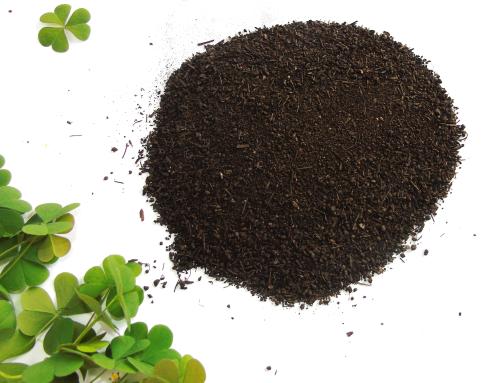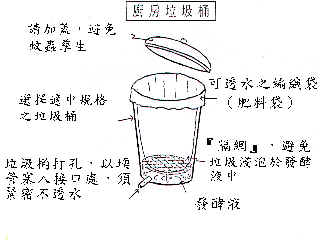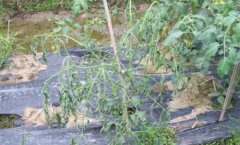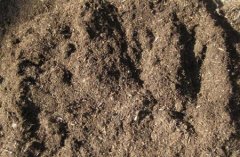Kitchen waste into organic fertilizer: kitchen waste as organic fertilizer, how to use kitchen waste to make organic fertilizer?
In many European countries, when dealing with food waste and falling leaves in the courtyard, they often use their own courtyards to pile up naturally, and there are also people who use machines to carry out high-speed fermentation. In the early days of Taiwan, farmers all had compost houses and water and fertilizer ponds, which provided us with room for reflection and reflection.
There are many kinds of household organic waste, such as vegetable industry picked up before cooking, kitchen waste, peel, expired food, animal waste, garden weeds, fallen leaves, tea dregs, eggshells, dairy products. All kinds of carbohydrates, such as rotten, rotten, and smelly organic matter, belong to them. In the past, we treated them as wastes that could not be recycled. However, precisely because the organic matter had the characteristics of decay, rotten, and smelly, the waste gas, waste water, and stench were the protagonists of the garbage war, and even caused the second public hazard. Based on the rising awareness of environmental protection and the concept of people sweeping the snow in front of their own doors, the garbage problem has come to the surface, forcing us to speed up our thinking on solutions.

Explanation: the biggest problem of kitchen waste treatment lies in its high moisture content and instability of materials, such as animal waste and high protein, so it is easy to produce insects and stench, and it is easy to form anorexia and odor when fermenting with high moisture content. in particular, the special eating habits of Chinese people make it more difficult to deal with.
Generally, microorganisms (solid or liquid) can be used as accelerated starter in the treatment of kitchen waste, but the current popularized treatment methods mostly use foreign imported microbial strains, and whether long-term use causes sequelae is worthy of follow-up and discussion by relevant scholars. In addition, the process of using household kitchen waste buckets to treat kitchen waste to produce compost cannot be fermented at high temperature to achieve the effect of disinfection, and it only has the function of breeding microorganisms, which also affects the quality of composting. Of course, it is reasonable from the standpoint of environmental protection, but from the standpoint of fertilizer, there is room for controversy.
Manufacturing method: take the bucket as shown in the attached picture, which can be made of discarded plastic buckets. the distance from the bottom of the bucket is about 3-5 cm, and the net hole is within 5mm. At present, some commercial products have been put on the market.

1. Remove the household organic waste from the soup and drain it and cut it fine (about 2-3 cm). Pour it into a household kitchen waste bucket and spread it flat.
two。 Spray the liquid microbial solution for 3 times or 5 times or apply the solid bacteria thinly to the upper layer of the kitchen waste, depending on the amount of single injection.
3. About 3 days later, a large amount of juice flowed out of the aqueduct (fermentation liquid), and then the juice was released every 2 ~ 3 days, and the taste of the fermentation liquid was sour and sour. Please be careful not to touch the clothing when taking it. If you touch the fermentation broth, it will take about four hours for the flavor to fade away.
4. Disposal of household kitchen waste buckets when they are full:
As shown in the figure, when a permeable woven bag is put in the barrel, the whole bag can be taken out and stacked for subsequent fermentation.
a. When the woven bag is not installed, the fermentation can be continued in a closed barrel for 2 to 3 months, which is good composting, and the fermentation broth must be discharged regularly during the fermentation period.
b. Put it into the vegetable garden and fully mix with the soil. Spray water and turn it twice every 10 days. It can be used after about a month.
c. It can be agreed by the neighbors of the community to set up household kitchen waste buckets at home and pour the materials into the centralized buckets shared by the community after the buckets are full. The centralized bucket can be made of several large buckets (about 300 liters as shown in the picture), and then the bacteria can be applied thinly. The procedure after the concentrated bucket is full is the same as the previous a. B. For the treatment of the two items, we may use e. To deal with.
d. Take the portable centralized bucket (50,100L) for community and neighborhood sharing. After discussing the full bucket with the farm, the farm will retrieve it to make compost.
Advantages and disadvantages:
Advantages: 1. The cost is low. two。 Easy to implement.
Disadvantages:
1. It is difficult to get space in a metropolitan community, so it is not easy to prepare several buckets of household kitchen waste at home.
two。 Without aerobic and high temperature fermentation, pathogenic eggs and weed seeds can not be killed.
3. The moisture content of the compost is still high, so it is not convenient to use.
4. Due to difficulties in obtaining space land, appropriate shade is required for outdoor placement, and typhoons and torrential rains should also be taken into account.
5. Setting up kitchen waste fermentation buckets at home or in the community can be tiresome because of the stench.
Utilization
Compost utilization
For your own vegetables, potted flowers and other fertilizers.
It is used for greening and fertilization in communities, schools and homes.
Provide farm fertilization.
Utilization of fermented liquid fertilizer
For cultivation: 100-200 times dilution for foliar use, 30-50 times for irrigation.
Cleaning use: can be poured into the toilet to clean the toilet and flushed into the septic tank, using the microorganisms in the liquid to decompose the organic matter in the septic tank to prolong the life of the septic tank.
Environmental protection: can be poured into the stinky ditch (stagnant water is not allowed), the use of microbial decomposition in the liquid to cause odorous organic matter, reduce odor and mosquito breeding.
- Prev

Tomato bacterial wilt: how to control tomato bacterial wilt? The best treatment for bacterial wilt
Tomato bacterial wilt is a very serious disease in growing tomatoes. If it is not well treated, it is easy to cause significant damage. How should it be treated? Let's take a look. Pathogen: the disease is caused by Pseudomonas solanacearum, which belongs to non-fluorescent false list.
- Next

Composting principle: kitchen waste composting, how to make composting box is environmentally friendly and practical
Now, we all like the ecological environment is good, there are many people, have made compost, that is, environmental protection and practical use. What about composting? Do you know? Let's take a look. For composting to be successful, the right amount of water, air,
Related
- Fuxing push coffee new agricultural production and marketing class: lack of small-scale processing plants
- Jujube rice field leisure farm deep ploughing Yilan for five years to create a space for organic food and play
- Nongyu Farm-A trial of organic papaya for brave women with advanced technology
- Four points for attention in the prevention and control of diseases and insect pests of edible fungi
- How to add nutrient solution to Edible Fungi
- Is there any good way to control edible fungus mites?
- Open Inoculation Technology of Edible Fungi
- Is there any clever way to use fertilizer for edible fungus in winter?
- What agents are used to kill the pathogens of edible fungi in the mushroom shed?
- Rapid drying of Edible Fungi

